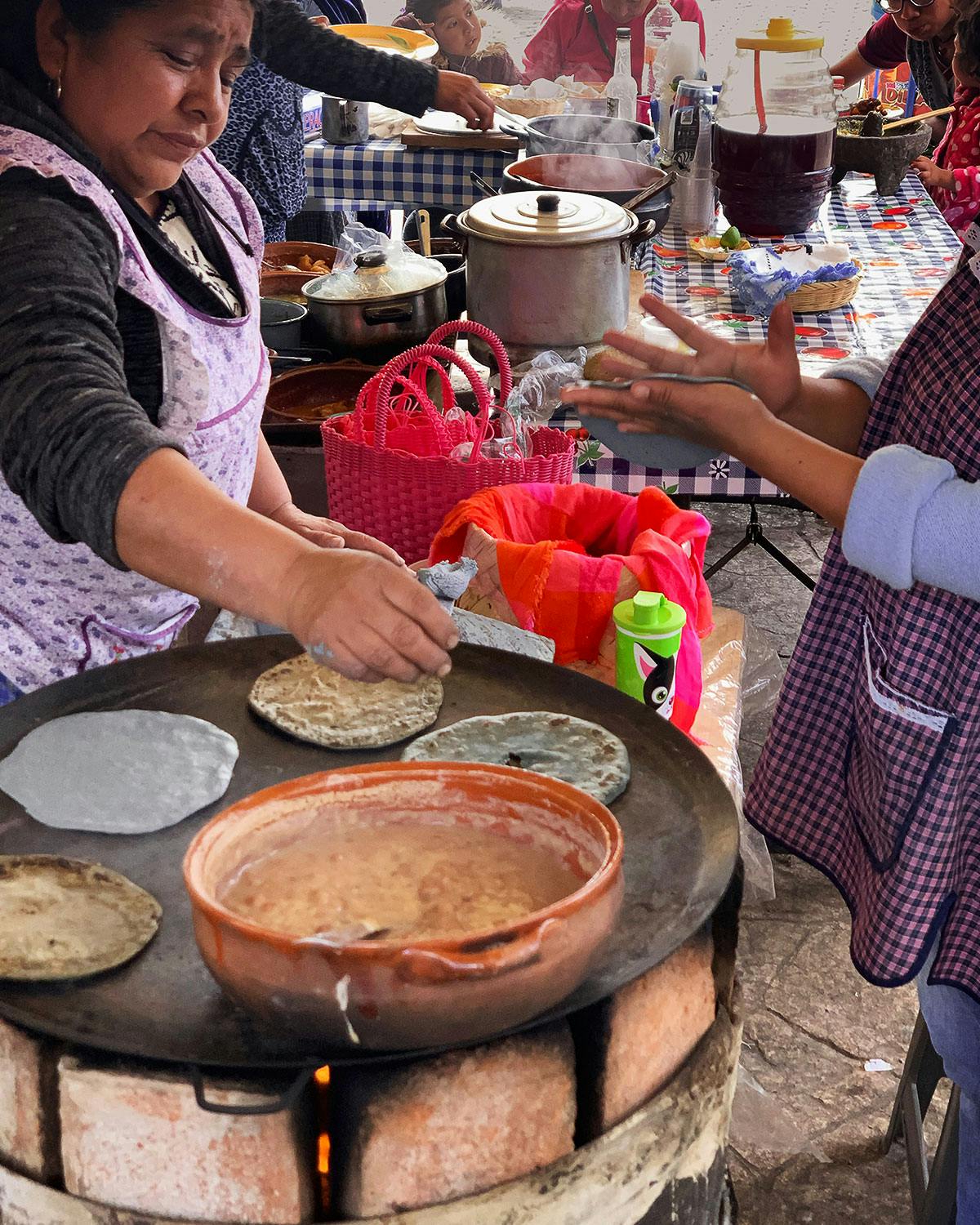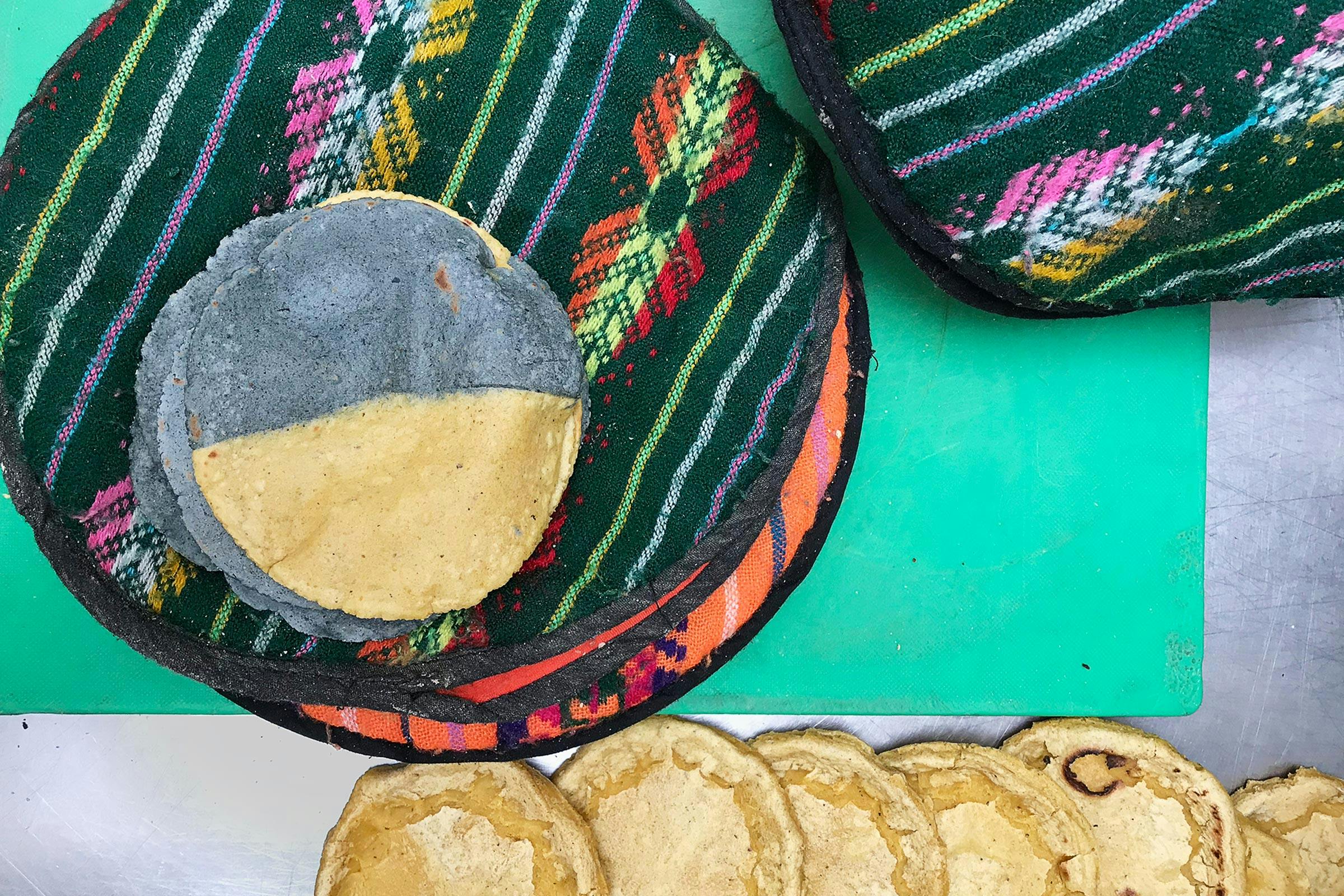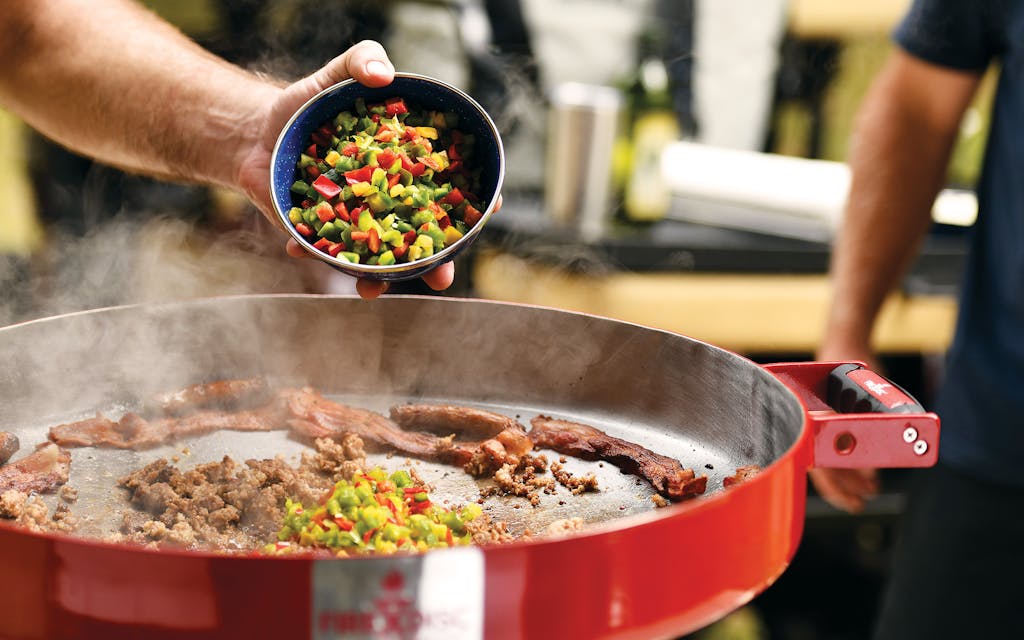Mexican cooking doesn’t require a lot of fancy gadgets, but it’s still worth stocking your pantry with a few simple staples. No matter your skill level in the kitchen, choosing the right tools can help elevate your cooking. Sure, you could make salsa faster in a blender than by hand with a molcajete (the Mexican version of a mortar and pestle), but some chefs swear that stronger flavors are released by grinding ingredients the slow, traditional way. Conversely, a good tortilla warmer will save you time. We asked a few Texas chefs to share their tips for selecting five of the most common tools.
Tortilla Press
If you’re going to try your hand at making corn tortillas, you’ll need a tortilla press. Look for one whose top and bottom are even and level in both the open and closed positions. “It’s got to sit flush when closed,” says Regino Rojas, chef-owner of Revolver Taco Lounge/La Resistencia in Dallas. “It can’t be crooked or wavy.” Make sure there isn’t any warping and that the press’s alignment is straight.
The tortilla press’s shape (round or square) and material (metal or wood) are a matter of personal preference. “I love a heavy steel one that lets the weight provide some of the pressure needed to press evenly,” says Gabe Erales, executive chef of Comedor in Austin. He also prefers a press that’s professionally painted and has a corrosion-resistant finish.

Comal
Traditionally, a comal is a large, round earthenware or ceramic cooking surface akin to the modern flattop griddle. It has an ancient history, with archaeological evidence suggesting that the Aztecs and other indigenous peoples used comales as early as 300 BC. “You can’t have tacos without the invention of the comal,” says chef Emiliano Marentes of Elemi in El Paso. “Its invention during the time when clay was first being used in Mesoamerica paved the way for the tortilla.”
Comales remain in use by the likes of cocineras tradicionales, an honorific reserved for cooks who continue the practice of traditional Mexican gastronomy. Comales are also found in some Mexican restaurants, including José in Dallas, where executive chef Anastacia Quiñones-Pittman treats her treasured comales just like she would heirloom cast iron: “Never put them in the dishwasher!” Marentes prefers a thick, blue, carbon-and-steel comal (such as one made by Masienda and Austin-based Made In) that can retain heat over a traditional clay (barro) one. The latter will eventually crack, he says.
A modern comal can be as simple as something you already have—like a nonstick pan or a cast-iron griddle with a flat top—or as complex as the specialized type Marentes uses at Elemi. Comales work great for making freshly pressed tortillas or reheating tortillas purchased from tortillerias or small stores with a side tortilla-making operation. Tortillas cook fast. You’ll want to flip them as they begin to inflate. Flour tortillas should be spotted brown from heat. “My trick to puffing up my tortillas is to have one side of the comal a tad bit cooler and the other side hotter,” Marentes says.

Tortilla Warmer
Once you have your heated tortillas, you need to keep them warm for the duration of a meal. Enter the tortilla warmer. Erales is thoughtful about this simple container, saying he prefers a warmer of “handmade artisanship that matches the size of the tortillas and insulates well.”
A wide variety of warmers are available at chain supermarkets, big-box stores, and tienditas (small Mexican stores). The most common is the 8.5-inch round, brown-colored plastic warmer made by IMUSA and myriad other manufacturers. Insulated pocket warmers are common too. There are lovely options embroidered with indigenous Mexican Otomi-inspired designs and other elements. Woven warmers are also popular. Whichever option strikes your eye, make sure it’s microwave and/or oven-safe—just in case. Not that we endorse microwaving tortillas (it’s considered a blasphemous act), but convenience is sometimes key.
Molcajete
As much a show piece as it is an integral part of a Mexican kitchen appliance arsenal, the molcajete is a three-legged bowl made from a single piece of volcanic rock with a conical tejolote, or grinding stick. The bowl makes for a splashy presentation of surf-and-turf cocktails with cooked shrimp tails hanging over the outside rim like candy canes on a Christmas garland. But its original purpose is as a mortar and pestle, one perfectly suited for the making and serving of salsas. Salsa molcajetes can be any color, but for some reason are more often than not red.
Not unlike a cast-iron frying pan, a molcajete requires heavy seasoning before you use it. The process smooths the bowl’s interior surface and prevents the release of grit and rock. Houston-based high school culinary teacher and Master Chef finalist Cesar Cano can attest to the effort involved. After buying his molcajete three years ago and attempting to season it with rice, beans, and corn, he gave up and decided to instead use his two blenders. Last month, he gave seasoning the bowl another go. Cano says it took him about eight passes at grinding a mix of rice, corn, and salt into the molcajete before it was ready for use. “I got a callus on my right palm,” he laughs. “It really is an act of sacrifice and love to get to that point where you can use it for food and salsas.” Cano shared a portion of his process on Instagram.
Although the act of seasoning might seem a tad too masochistic, the curing process and use of a molcajete expresses the complexities and uniqueness of Mexican food. No salsa, no mole, no anything crushed in a molcajete will have the same consistency in every instance. The textures, consistencies, and yield all depend on the cook, the pressure he or she applies when using the molcajete and tejolote, and the ingredients used. It’s a special tool that’s been in use for thousands of years and remains an essential item of the Mexican kitchen.

Disco
A disco is a wide, shallow, wok-like steel pan heated over an open fire or with propane. It originally developed from refurbished plow discs used on northern Mexican ranches. Discos are used to make discada, a northern Mexican mixed-meat preparation that is also the product of a treasured backyard social act. Disacada is rarely available on Texas menus outside of El Paso or Austin’s Discada taco trailer.
Luis Olvera, owner of northern Mexican–style taqueria Trompo in Dallas, grew up eating discada on summer visits to his family’s hometown of Monterrey. It was there, during off hours at his uncle’s restaurant, that he feasted on discada made collectively by his uncle and friends. “I see discada as this insane comfort food,” the North Texas native says. He learned to make the dish under his uncle’s tutelage. After years of preparing discada, Olvera, who is in his late thirties, has come to prefer cooking with propane gas. “It offers a more stable cook,” he explains. That’s evident in the FireDisc, one of the latest in new backyard or mobile cooking appliances. The Nomad grill is another; both companies were founded by Texans. Available in two sizes (the original 24-inch and the tall 36-inch) and two colors (red and black), the FireDisc is a three-component setup: the two-part X-shaped base and the disco. It’s a real beaut when assembled, and it makes for the ideal modern disco.
The cooking surface needs to be seasoned with either oil or manteca (pork lard), per the instructions accompanying the FireDisc. You can start cooking immediately after seasoning is complete. Anthony Pratto, co-owner of Discada in Austin, is familiar with the FireDisc and approves of the outdoor cooker. “It’s a great company that offers a product that is somewhere between the traditional cooking steel and cast iron. It works,” he says.
In non-pandemic times, a backyard FireDisc would also offer an ideal gathering place for friends to knock back a few beers (the recipe below calls for cerveza) and shoot the bull while arguing about leaving the bacon or chorizo in too long or which ingredients should be in the mix. Pratto compares it to paella. “Every recipe is different,” he says before going on to impart words of encouragement. “As long as you start with your fattiest meal, you won’t fail.”
Want to make your own discada? Here’s the recipe used by Luis Olvera of Trompo, reprinted with permission.
Discada
¼ cup manteca (pork lard)
3 garlic cloves, chopped
1 pound sirloin, diced in 1-inch cubes
1 pound pork shoulder, diced in 1-inch cubes
1 ounce salt
½ tablespoon black pepper
¼ pound bacon, chopped
¼ pound chorizo
¼ pound pork sausage, cut in rounds
½ medium onion, cut into rounds
½ bell pepper, any color, seeded, cut into rounds
1 poblano chile, seeded, cut into rounds
1 medium tomato, diced
8 ounces beer, any pale ale
- Dust off your favorite well-seasoned disco, wood-fired or gas. (Note: I prefer using my propane burner, for a more stable cook.)
- Toss in your lard. As it melts, add the garlic, for 15 to 20 seconds or so. You don’t want to burn it.
- Then add the sirloin and shoulder. Lightly salt the ingredients. Add black pepper and allow the meat to brown. This should take approximately 10 minutes.
- You can either scoop out the meat and set it aside while you cook the next three ingredients, or spoon the meats along the outer edge of the disco while you cook the next three ingredients.
- Cook bacon until crisp. Add chorizo. Cook it thoroughly and add sausage. Return the meats to the heat, and mix everything.
- Spread the ingredients out to the sides of the pan. Add onion, bell pepper, and poblano chile, then cook for a few more minutes. Cover the aromatics with the meats and sprinkle the tomato on top, then lightly dust with salt. After a few minutes, toss with a spoon or spatula and cook until the onion is translucent.
- Add beer. Bring to a boil and simmer for 10 minutes. Serve in corn tortillas or with tortillas on the side.








